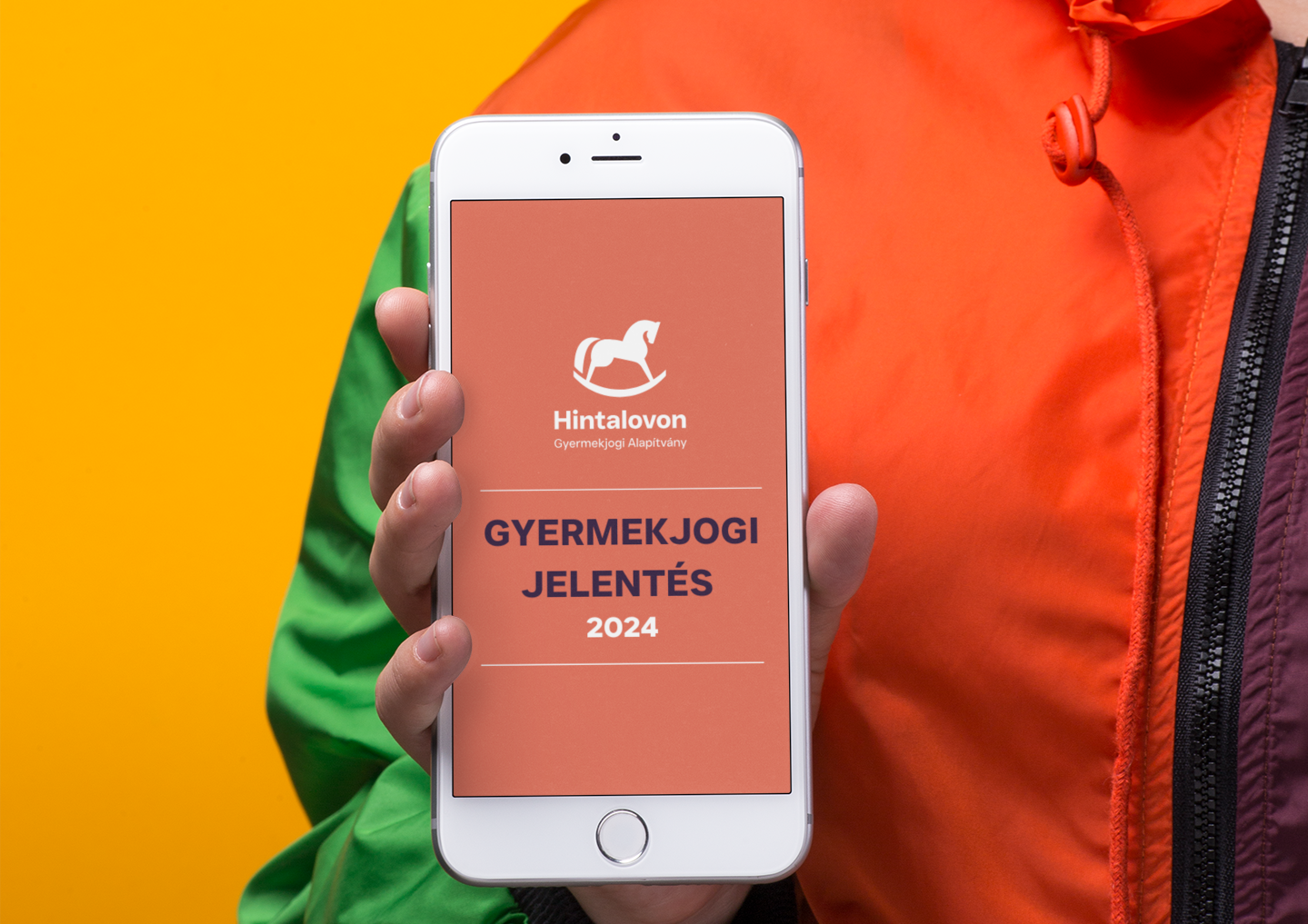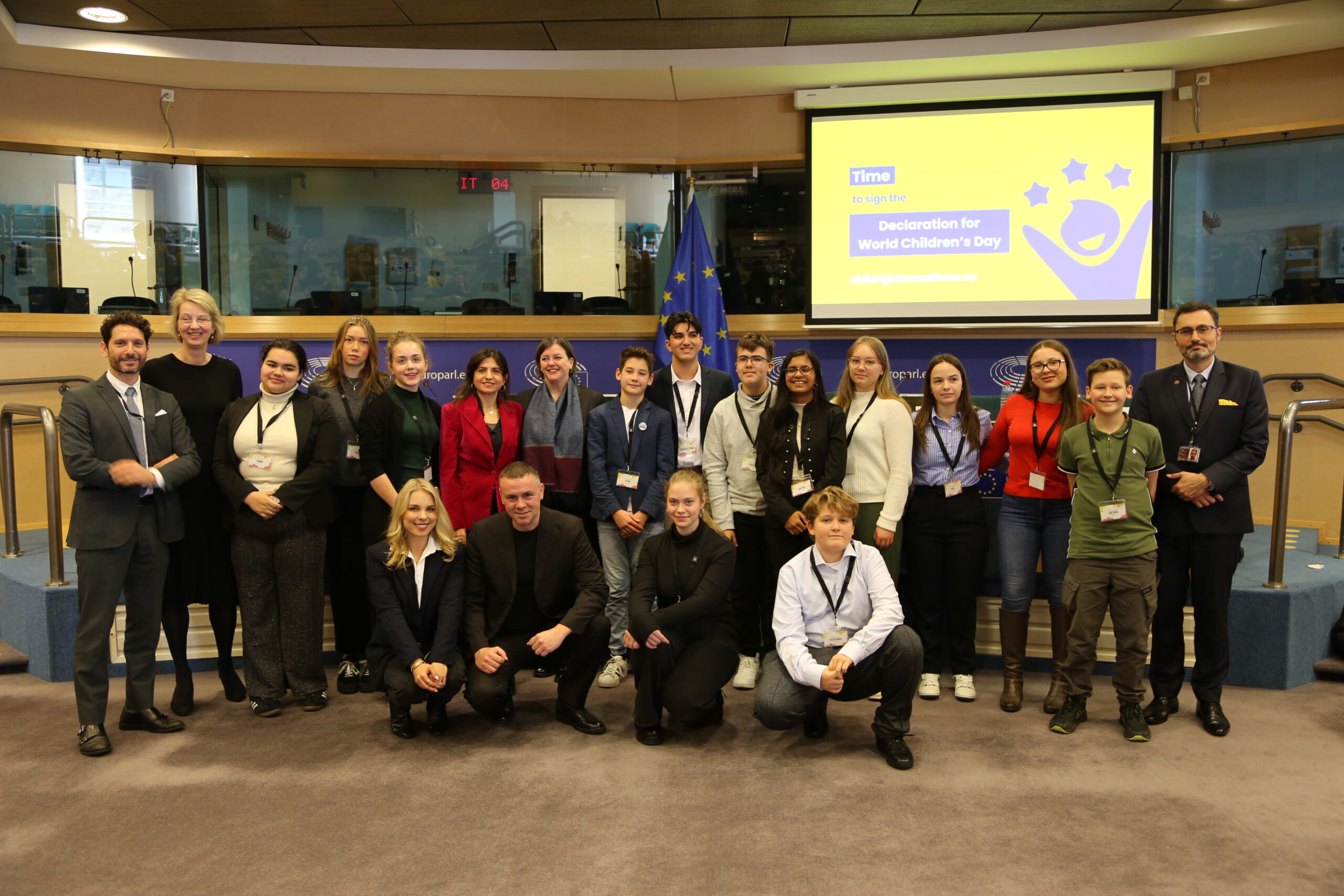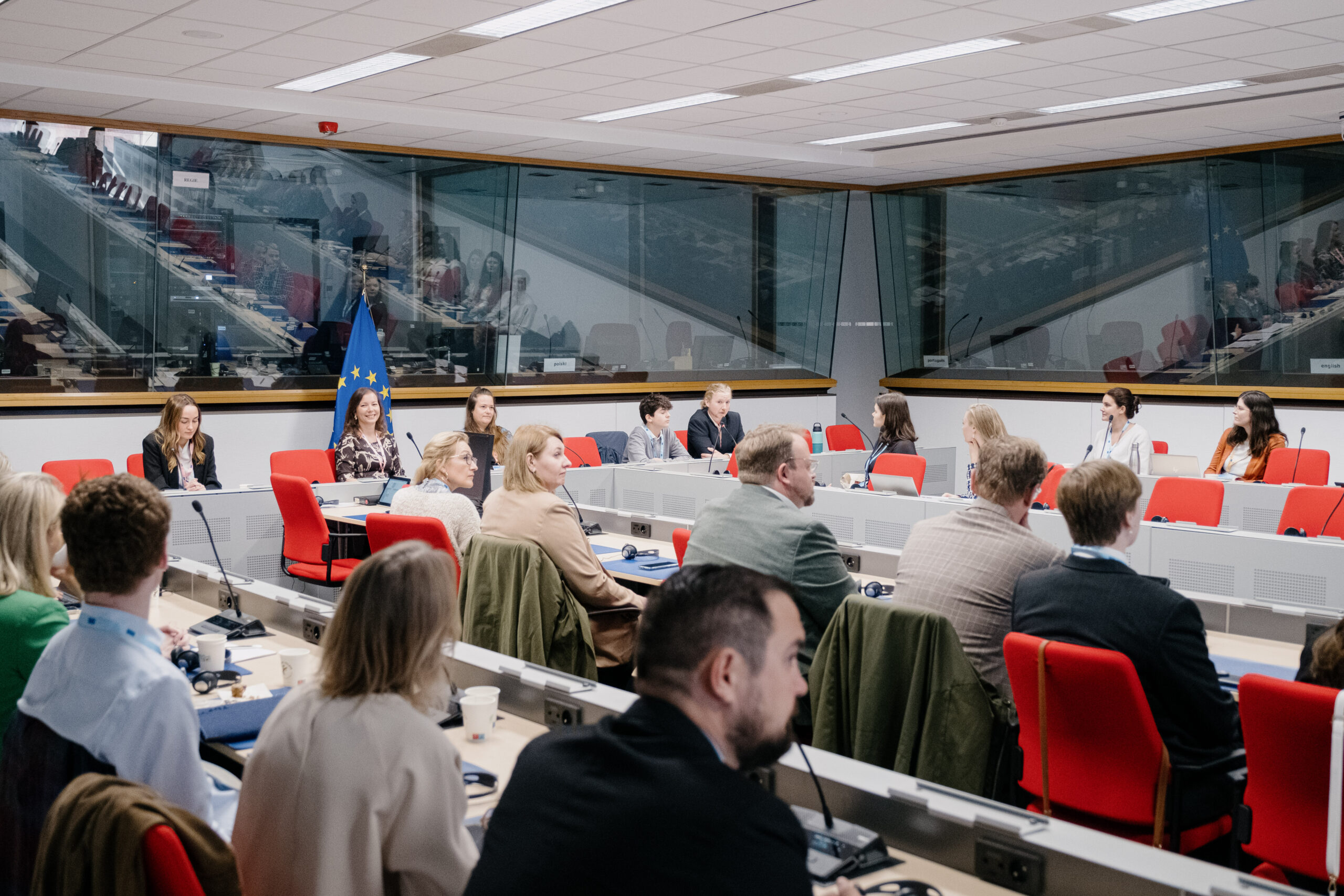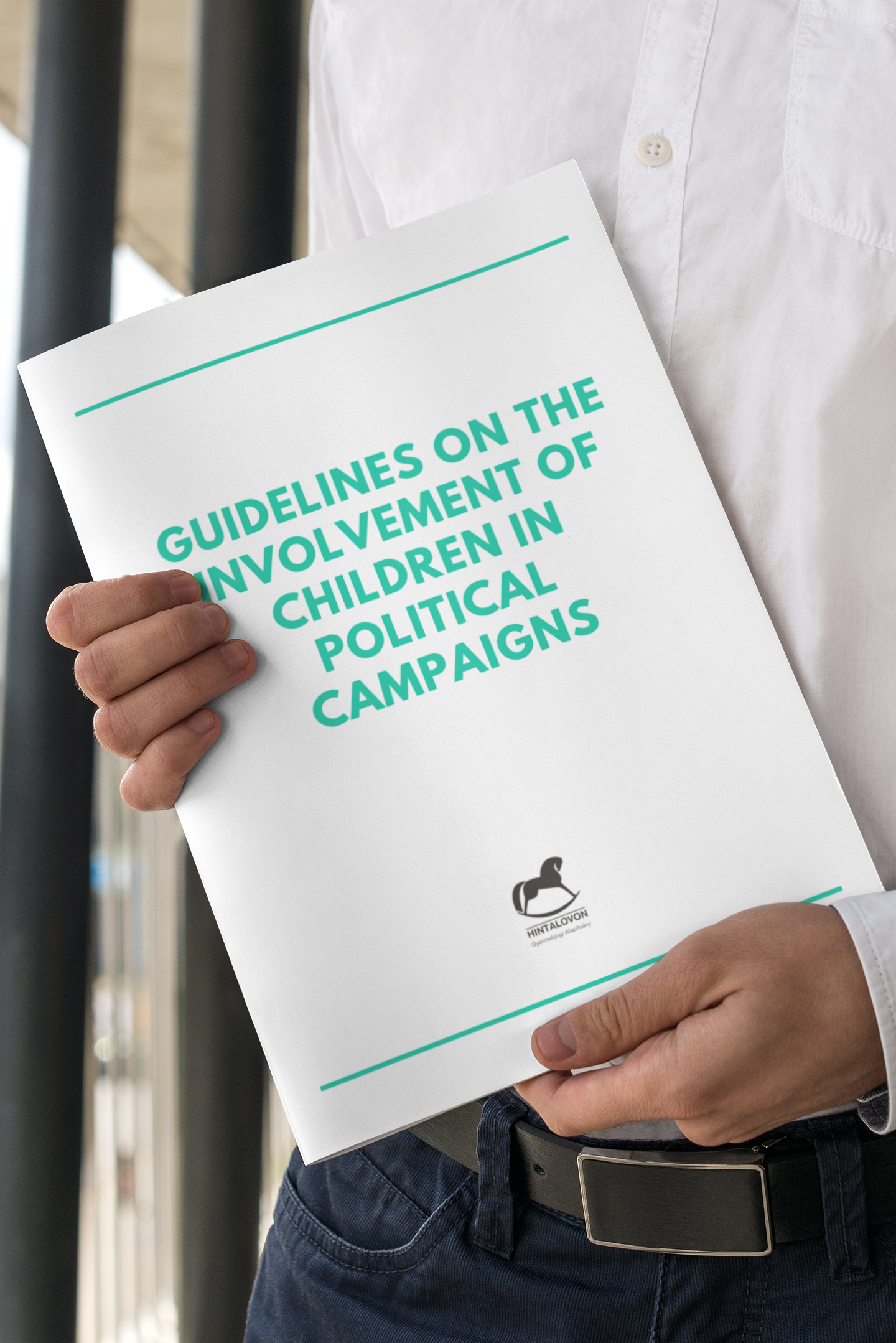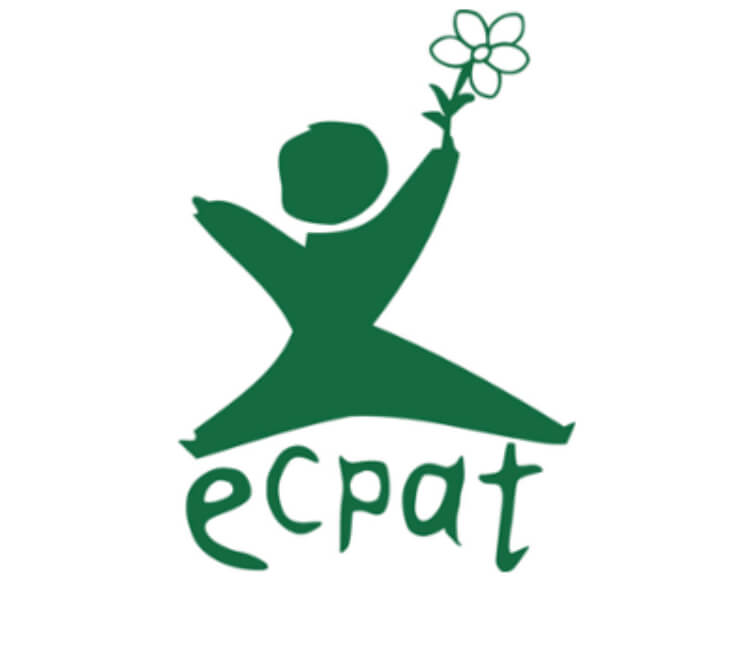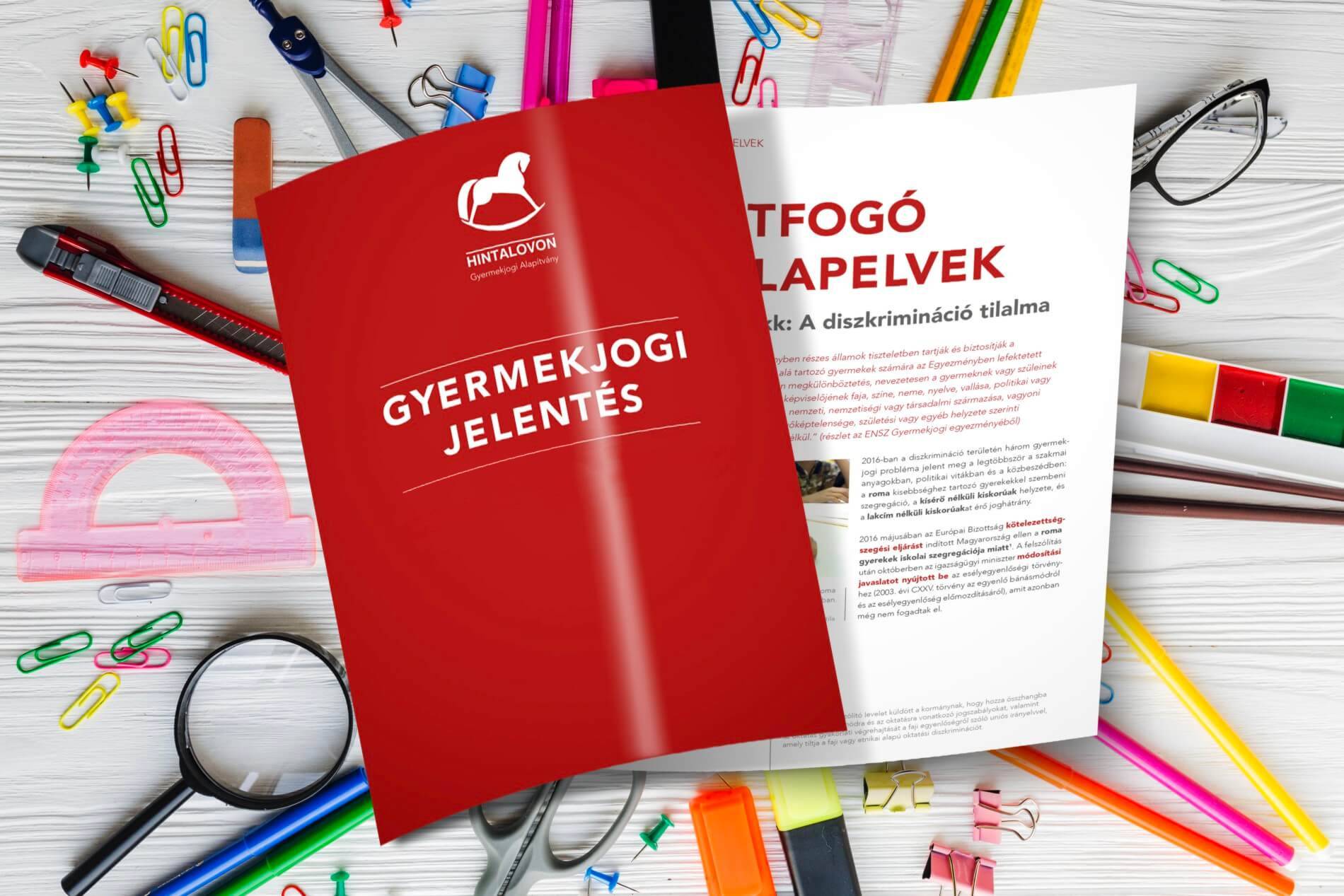The conflict of child rights during restrictions – the Child Rights Report 2020 has been published
For most people 2020 meant the coronavirus. The global pandemic disrupted everyday life. The role of the internet, medical treatment, and financial security became more important, as did the way that people treat each other both at home, and in the online space. Legislation and governmental decision-making garnered increased attention. Likewise, the importance of the trust placed in them and their sense of responsibility increased. During the pandemic, we felt first-hand the consequences of the kind of protection and support we could get, and the extent to which our opinion was taken into consideration. We experienced how important it is for our rights to be respected.
It is the fifth time this year that Hintalovon Child Rights Foundation published a summary of the most important child rights events of the previous year. The report offers a summary of the situation of young people under the age of 18, which was examined with regard to the laws, measures, available statistics, and programmes, with consideration of the reactions of the media and society. In 2020, three recurring and significant issues culminated: the impacts of the coronavirus, exclusion, and the issue of sexual abuse and exploitation.
Families spent more time together, but the pandemic dramatically filtered social relationships, and new challenges were posed by the subsequent changes in closeness and distance. The volume of calls to helplines doubled, alcohol consumption and the number of addictions also increased among children and in families. Failures of the healthcare system and legislation became visible. Due to the pandemic, not only did we have to face new challenges and living conditions that had not existed before, but the existing social problems and inequalities also deepened.
“Disadvantaged families carried an enormous burden, which was hardly changed by the increased family allowances. The pandemic helped us become sensitive to issues, which had not drawn enough attention before, including privacy and digital safety, protection from fake news, and the shortage of teachers, doctors, and psychologists. Collaboration began for the supply of digital devices, for the fight against domestic violence, and teachers and families that were left alone cooperated for the benefit of children. We were simultaneously more alone and more together, and a spirit of common destiny was created between us. In isolation, the importance of freedom was reevaluated” – highlighted Barbara Németh, one of the authors of the Child Rights Report.
Children lived in these circumstances. This is how they spent half, a quarter, or an eighth of their lives, those sensitive months and important events, which are once in a lifetime and never to be repeated. It was not only rituals like graduation ceremonies or birthday parties that were cancelled or transformed, but it also caused a painful regression for a lot of disabled children who were unable to access development training, and that digital education remained merely an illusion for disadvantaged children. Homes became schools teaching under the new National Core Curriculum, which, according to the opinion of two-thirds of children, hardly took into account their free time.
2020 and the pandemic were a race against time, with which legislation could only try to keep up. Every week there was an amendment to child-specific legislation – 60% of which were enacted as a consequence of the coronavirus pandemic. A large part of them were in response to changes in education, and the need for rapid adaptation to the state of emergency led to a legislating environment that mostly hurt the individual needs of children. For example, bans on visits to children’s homes, transformation of the district nurse, social worker, GP care systems, which were until then based on personal contact, resulted in several new problems and left existing ones hidden.
The pandemic highlighted how certain child rights can easily clash with each other in a crisis. There was increased attention paid to the necessary and proportionate restriction of fundamental rights, for example, to the total ban on assembly, the restriction of hospital visits, and the suspension of asylum applications. In this situation, it was critical to understand and promote one of the principles of the UNCRC, which states that respecting the best interest of the child shall be a primary consideration in questions that concern them. As the Commissioner for Fundamental Rights observed: children’s rights cannot be put into inverted commas by the state of healthcare emergency.
2020 was the year of restrictions, but this was not just because our comings and goings were regulated throughout the pandemic. More discriminative provisions were also adopted. The Ninth Amendment to the Fundamental Law excluded certain children and parents from constitutional legal protection, which resulted in further grounds for exclusion. It narrowed down the definition of family, the types of identity, and educational values, which ought to be protected, and it targeted LGBTI children and gender education. The independently operating Equal Treatment Authority was abolished, and its reorganisation resulted in the restriction of legal remedies. Parliament rejected the ratification of the Istanbul Convention, and placed single parents and same-sex couples who were wishing to adopt children into a difficult position.
Meanwhile important progress was made concerning the sexual exploitation of children and the protection of the victims of violence. For the first time, the law regards children affected by prostitution as victims rather than perpetrators. It took a politically sensitive scandal involving 20,000 children to talk more about online abuse, responsible social media use, notwithstanding the fact that the number of pedophilia-related content reported to authorities doubled compared to the previous year, and increased sixfold after 2016. Crisis management outpatient clinics were improved; the capacity of helplines was increased; steps were taken to expand the Barnahus model of child care homes; and a government campaign was launched to protect families, women, and children. Furthermore, there was an ongoing debate on what needs to be done to prevent and handle violence in schools.
Rather than focusing on data, the 2020 report places measures and legislation front and centre. The “supply-threatening” risk of freedom of information requests made it more difficult to obtain data, which is not interesting for the quality of the report’s sake but because rejected requests raise the question of the extent to which transparent, evidence-based, and coordinated decision-making in ministries and official bodies is guaranteed.
In 2020 life seemed to have stopped, however it appears to have provided the momentum for the inception of change that was long awaited, though less timely in a time of crisis. It could often be felt that alongside families, the issue of children also became an ideological question. Their involvement served as a focal point in socio-political discussion; if a child was involved in a case, a dispute immediately broke out. However, it is also necessary to strengthen child rights perspectives in opposition to the political and ideological narrative. We hope that this report offers a reliable starting point for both professionals and laypersons alike.
The most important findings of the report are as follows:
LEGISLATION
- Every week there was an amendment to legislation specifically affecting children. 6 out of 10 were adopted due to the coronavirus pandemic.
- One of the most active areas of epidemiological legislation, which has a direct impact on children’s lives, was the massive transformation of education.
- In some cases, legislation responded only belatedly to the challenges and needs arising from the pandemic.
DISCRIMINATION
- The tasks of the Equal Treatment Authority were taken over by the Commissioner for Fundamental Rights, which limited the enforcement possibilities.
- The Ninth Amendment to the Fundamental Law introduced exclusionary changes. It narrowed down the definition of ‘family’, the types of identity, and upbringing, which ought to be protected, and it targeted LGBTI children and parents.
- There was a lacuna or delay in implementing measures tailored to vulnerable groups of children.
- Digital education further aggravated access to education for already disadvantaged children, which particularly affected Roma students.
- The regulation of adoption changed, putting adoption by single parents and same-sex couples in a difficult position.
- Parliament rejected the ratification of the Istanbul Convention.
- Victims of segregation at school cannot receive monetary compensation due to the amendment to the law following the Gyöngyöspata judgment.
FREEDOM OF EXPRESSION
- There was a general ban on assembly, which, according to advocacy organisations, was an unnecessary and disproportionate measure.
- Greater emphasis was placed on online freedom of expression. A survey launched by the ADOM Student Movement reached more than 21,000 children, while a survey by the National Student Council reached nearly 8,000 in connection with digital education.
- The National Student Information online portal was launched to promote dialogue and information between students and their representation.
- After three years, in February 2020, the National Student Parliament gathered.
- Scandal was triggered by a critically-voiced rap video made by a young person living in a children’s home.
- Children were affected by events in their schools and wider environment, which included a series of demonstrations in connection with the University of Theater and Film Arts and a mandatory news blackout in schools.
PRIVACY AND INFORMATION
- The advertising industry took steps to include children in advertisements and influencer collaborations.
- Increased digital presence and webcam use during the pandemic raised new privacy issues.
- A number of government, civic, and corporate programs helped provide access to resources. Nevertheless, the barrier to access remains, further increasing the regression of disadvantaged children.
- One-fifth of children did not find the internet safe, and after ads, they found fake news to be the most disturbing.
- Contradictory messages relating to the emergency; delays; organising graduation, for example; school closures; and access to certain services and support, caused difficulties.
- During a political action, a storybook presenting behaviours derogating from traditional gender roles was shredded, sparking a lively debate about when and what shared information is considered responsible behaviour while raising children.
VIOLENCE
- Every 10th child was at risk, with nearly 103,000 children at risk due to some form of violence or neglect (59%).
- 38% of adults said one slap will not hurt a child (despite the fact that there is zero tolerance at law).
- The volume of calls to helplines doubled, and in March 2020, 1.5 times as many domestic abuse cases were reported to police as in the same month the previous year.
- The law became stricter in domestic abuse cases.
- Virus-motivated bullying appeared.
- School guards appeared in schools.
- Crisis management outpatient clinics and helpline capacities were improved.
- Steps were taken towards the creation of children’s care homes in accordance with the Barnahus model in several locations.
- A government campaign was launched to protect families, women, and children, and to identify, prevent, and provide information on how to seek help.
- The number of crimes against children aged 0–13 has increased significantly, but remained almost the same for those over 14 years of age. A total of 6,310 cases were initiated in which the victim was a minor.
- It was the year of victim support.
- Parliament rejected the ratification of the Istanbul Convention on Domestic Violence.
FAMILY
- The Ninth Amendment to the Fundamental Law introduced a provision that severely restricts children’s rights with regard to the child’s identity, parenting, and parental rights. The amendment is exclusionary and stigmatising for children whose gender characteristics develop atypically or who are raised by same-sex parents.
- There was a significant increase in the amount of time families spend together.
- In many cases, maintaining contact with parents living in separate households became more difficult, and children were at an increased risk of domestic violence.
- 3 out of 4 children living outside their family homes lived with a foster parent, and every 4th child lived in a children’s home.
- 316 infants lived in a children’s home, even though the law requires placement in a family setting.
- Several forms of family support were expanded on more favorable terms.
- The transfer of contact cases to the courts sped up the proceedings.
- During the pandemic, children living in children’s homes were not allowed to leave the home for 40 days and not all were able to keep in touch with their blood family members (not even through digital devices).
- Several measures aimed at simplifying adoption, while recognising the joyful changes, the abolition of compulsory preparatory training and the restriction of single parent adoption were the subject of a number of professional criticisms.
- In Kalocsa, light was shone on a case of molestation by a priest providing spiritual care in a children’s home.
DISABILITY
- The number of children with special educational needs (SEN) increased. Nearly one-third of SEN students were left out of blended learning.
- A new action plan for the implementation of the National Disability Program was completed.
- The UN Commission on the Rights of Persons with Disabilities identified persistent and systemic violations of persons with disabilities based on on-the-spot investigations and interviews.
- There continued to be large residential institutions for the care of people with disabilities, where children and adults are housed together.
- More than half of children with disabilities living in specialist care lived in institutional settings.
- 8% of students with disabilities did not receive any distance learning (developmental education) and a further 15% took part in some form of development training only once a week.
- The Ministry of Human Resources (EMMI) identified people with disabilities as a particularly vulnerable group in terms of the coronavirus pandemic and issued an Action Plan.
- In November, children with autism were released from the obligation to wear masks.
HEALTH
- A significant proportion of pediatricians were exempted from personal patient care in the spring (in 2019, 40% of them were over the age of 65).
- There were a number of complaints about restrictions on the presence of birth partners in maternity rooms, hospital visits, and the separation of coronavirus-infected mothers and newborns.
- The pandemic also limited district nursing care.
- The amendment to the Health Act eliminated the possibility of freely choosing an obstetrician.
- Extensive research shed light on the poorer health of children in poor families.
- 5 children per day gave birth to a child.
- 2 out of 3 parents were dissatisfied with sex education at school.
- Family life education became part of the National Core Curriculum.
- The number of child marriages dropped by nearly a third after 2016, but it still affects 300 children a year.
- Every 6th young person attending grades 9-10 had already used marijuana (17%), 1 in 10 had already taken sleeping pills and sedatives without medical advice (9%), and 1 in 20 had also tried designer drugs.
- Homeschooling, reduced social relationships, increasing alcohol consumption, and domestic violence posed an increased risk to children’s mental health.
- Despite the growing demand, child psychiatric and addictive care suffered from severe deficiencies.
STANDARD OF LIVING
- Subsidies to be introduced as part of the Family Action Plan (e.g. Family Housing Support, maternity benefit, car purchase subsidy, grandparent leave) were expanded. However, these did not present genuine help for the most vulnerable families.
- Applying for family allowance was simplified, but its amount has not been increased for 12 years.
- Restrictions due to the coronavirus increased the burden on families, and many lost their jobs.
- Lack of digital devices caused a problem for disadvantaged children. There was no electricity in many households, and access to everyday food was a problem with the loss of free institutional meals.
EDUCATION AND FREE TIME
- The scope of free education expanded.
- Children were taught on the basis of a new National Core Curriculum from September, which received a number of criticisms due to the increase in learning materials, the validation of ideological considerations, and its restrictions on the freedom of education.
- In mid-March, there was only one weekend available for the introduction of out-of-classroom education. The Action Plan was already completed for the 2020/21 school year.
- In primary school, nearly 1 in 5 students had little or no access to online education.
- 2 out of 3 children said the quality of education in the digital timetable had deteriorated and the school had less respect for their free time.
- Government, civic, and corporate programs helped children access digital devices, and smart textbooks were produced.
- Digital education further aggravated access to education for already disadvantaged children due to the lack of digital tools as well as the lack of a supportive environment.
- There was a lot of uncertainty about how to hold graduation exams safely.
- Nearly one-third of SEN students dropped out of blended learning.
- The closure of nurseries and kindergartens put families in a difficult position, with on-call duty being authorised only after delay.
- The average level of basic skills of Hungarian 15-year-olds was significantly lower than the EU average and had deteriorated since 2009.
- Excessive rules that put undue strain on children were introduced in many kindergartens and nurseries.
- In the EU, Hungary had the highest ratio of kindergarten attendance (95.7%).
- Several programs and collaborations were launched to provide patriotic education for young people and associated defense training.
- Family life education became part of the National Core Curriculum.
REFUGEE CHILDREN
- At the time of the appearance of coronavirus, applicants were suspended from entering transit zones.
- There continued to be a “crisis caused by mass immigration” in Hungary, under which the Child Protection Act could not be applied to unaccompanied minors between the ages of 14 and 18.
- In May, the Government abolished transit zones and placed previously detained asylum seekers into reception centers.
- New asylum rules came into force, which, with a few negligible exceptions, abolished the right to apply for asylum in Hungary.
- After its introduction, only a few families were able to apply for asylum in Hungary, and unaccompanied minors did not enjoy priority.
- The return of those crossing the Serbian border illegally was often violent and children were also victims.
JUSTICE
- In the last few years, the number of convicted persons continuously decreased.
- Compared to the previous years, half as many 12-13-year-olds were convicted (11 children). Restrictions introduced due to the coronavirus pandemic slowed down adjudication.
- Approximately 20% of the convicted young people were sentenced to imprisonment, however de facto enforcement of sentences took place in less than 5% of cases.
- Most of the time, probation and supervision were enforced for convicted young people. Placement in an educational institution was enforced in less than 10% of cases.
- The number of crimes against children significantly increased, and proceedings were launched in almost 500 more cases (6310) than in the previous year.
- The number of domestic violence crimes increased. Three times as many children became victims of partner violence, and the number of victims of sexual violence increased by 60% compared to the year 2019.
- It was the year of victim support.
- The Family Law Experts Working Group was established and more campaigns and co-operations were launched, including, for example, the website www.vansegitseg.hu.
- 3 victim support centres were established in the country, with plans to expand access in all counties.
- Steps were taken to establish children support homes according to the Barnahus model at more locations.
SEXUAL EXPLOITATION
- Legislative changes ensured increased opportunities for children who are victims of sexual exploitation to receive professional help.
- A new 3-year strategy to combat human trafficking was launched, with a special focus on victims of trafficking under the age of 18. The supposed victims are placed in special orphanages.
- For the first time, the law regarded children involved in prostitution as victims rather than perpetrators.
- There was a proceeding dealing with children’s sexual exploitation held almost every day of the year (304 girls and 45 boys became victims).
- Sexual violence was the third most common crime committed against children at the age of 0–13.
- The number of minor victims of sexual violence increased by 60% to 222 compared to the previous year.
- Very few children came under the radar of the national victim support service. There were no instances of support provided in cases of human trafficking or forced labor. Only 3 children were provided support for the crime of sexual coercion, and 28 children for the crime of sexual violence.
- Unprecedented attention was paid to the sexual exploitation and abuse of children in online spaces.
- The Kaleta case enhanced social sensitivity towards the use of social media.
- 6 times more pedophilia-related content was reported to the authorities compared to 2016.
CONVENTION
- The UN Committee on the Rights of the Child drafted new recommendations for Hungary based on the review held every 5 years on the implementation of the Convention on the Rights of the Child.
- A third Optional Protocol to the Convention is yet to be signed. It allows children to submit their complaints directly to the Committee on the Rights of the Child, which will investigate them and then instruct governments to take appropriate action.

